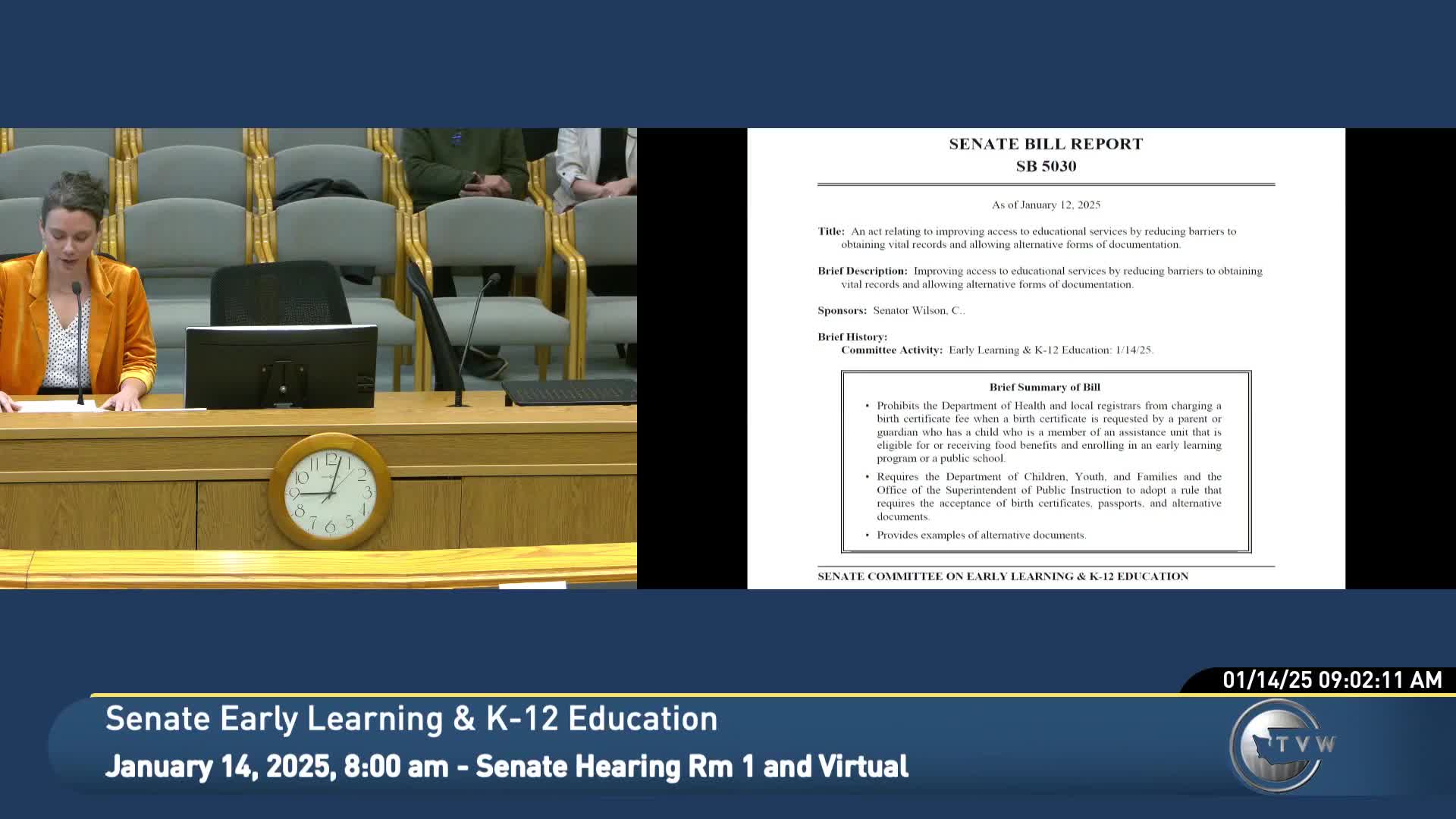Department of Revenue reports stronger uptake of Washington's Working Families Tax Credit in year two
January 14, 2025 | Early Learning & K-12 Education, Senate, Legislative Sessions, Washington
This article was created by AI summarizing key points discussed. AI makes mistakes, so for full details and context, please refer to the video of the full meeting. Please report any errors so we can fix them. Report an error »

Steve Ewing, legislative and external affairs liaison for the Department of Revenue, presented a year-two update on the Working Families Tax Credit (WFTC) to the House Finance Committee on Jan. 14, 2025.
The WFTC is a refundable credit for low- and moderate-income households enacted in 2021 to mirror the federal Earned Income Tax Credit. The Department estimates roughly 350,000 Washington households are eligible.
Why it matters: The credit is intended to reduce regressivity in state and local taxes, boost income for low-income workers, and stimulate local economic activity. DOR said the program is an unusual administrative effort for a non-income-tax state and requires outreach and partnerships to reach eligible households.
Key updates and data
- Year-over-year growth: DOR reported a 22% increase in refunds issued in 2024 compared with 2023 and a 28% increase in dollars refunded.
- Three-year prior claims: House Bill 1477 (2023) expanded eligibility to allow claims for up to three prior years; DOR said that change added roughly 18,000 applications and about $13 million in additional refunds tied to those prior-year claims.
- Recipient characteristics: About 80% of refunds in 2024 went to households with qualifying children, representing more than 1 million children reached by the program. The average refund was about $750. Applications refunded in under 30 days rose to about two-thirds of refunds from roughly half in the prior year.
- Access and outreach: DOR said it distributed $5 million in community outreach grants across 27 organizations, partnered with state agencies to send targeted mailings (DSHS sent more than 100,000 postcards and HCA more than 200,000 mailers), expanded multilingual support and added prepaid debit cards as a payment option. DOR onboarded four new modernized e-file (MEF) vendors and plans to add TurboTax as a vendor for the 2025 filing season.
- ITIN holders: About 9% of refunds went to households that included at least one ITIN holder; DOR said many ITIN holders are independent contractors or self-employed individuals who file federal returns using ITINs.
Questions from lawmakers covered program parameters (age limits aligned with federal EITC for childless adults), data-sharing limits with federal programs, and ongoing efforts to increase participation and reduce processing time.
Ending: DOR said it is continuing outreach, improving application and processing systems, integrating with IRS Direct File where feasible and pursuing additional vendor partnerships to increase participation and speed refunds.
The WFTC is a refundable credit for low- and moderate-income households enacted in 2021 to mirror the federal Earned Income Tax Credit. The Department estimates roughly 350,000 Washington households are eligible.
Why it matters: The credit is intended to reduce regressivity in state and local taxes, boost income for low-income workers, and stimulate local economic activity. DOR said the program is an unusual administrative effort for a non-income-tax state and requires outreach and partnerships to reach eligible households.
Key updates and data
- Year-over-year growth: DOR reported a 22% increase in refunds issued in 2024 compared with 2023 and a 28% increase in dollars refunded.
- Three-year prior claims: House Bill 1477 (2023) expanded eligibility to allow claims for up to three prior years; DOR said that change added roughly 18,000 applications and about $13 million in additional refunds tied to those prior-year claims.
- Recipient characteristics: About 80% of refunds in 2024 went to households with qualifying children, representing more than 1 million children reached by the program. The average refund was about $750. Applications refunded in under 30 days rose to about two-thirds of refunds from roughly half in the prior year.
- Access and outreach: DOR said it distributed $5 million in community outreach grants across 27 organizations, partnered with state agencies to send targeted mailings (DSHS sent more than 100,000 postcards and HCA more than 200,000 mailers), expanded multilingual support and added prepaid debit cards as a payment option. DOR onboarded four new modernized e-file (MEF) vendors and plans to add TurboTax as a vendor for the 2025 filing season.
- ITIN holders: About 9% of refunds went to households that included at least one ITIN holder; DOR said many ITIN holders are independent contractors or self-employed individuals who file federal returns using ITINs.
Questions from lawmakers covered program parameters (age limits aligned with federal EITC for childless adults), data-sharing limits with federal programs, and ongoing efforts to increase participation and reduce processing time.
Ending: DOR said it is continuing outreach, improving application and processing systems, integrating with IRS Direct File where feasible and pursuing additional vendor partnerships to increase participation and speed refunds.
View full meeting
This article is based on a recent meeting—watch the full video and explore the complete transcript for deeper insights into the discussion.
View full meeting
